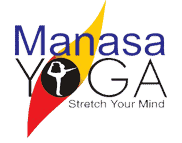Your cart is currently empty!

Your cart is currently empty!
In the first place, whenever an injury is involved, it is better to directly visit a teacher and discuss. Also,...

In the first place, whenever an injury is involved, it is better to directly visit a teacher and discuss. Also, do not see yoga practice as a substitute for proper medical treatment. In fact, It would better if a proper diagnosis is obtained from a doctor so that the yoga teacher also knows exactly what your specific problem is.
Now, coming directly to the question, there is a wide variety of issues related to the word ‘knee injury’.
Some of the common problems with which students come to classes are knee strains and sprains, which generally refer to over-stretched tendons and ligaments respectively, menisci injuries, etc.
During the stage of recovery from injury, care is taken by teachers to prevent students from extreme flexion of the joint (bending the knee), as well as heavy weight-bearing at the joint, such as standing on one leg. Efforts are directed towards a slow cultivation of movement, energy and awareness around the area without stressing the joint. Yoga props are used for the purpose. And once pain has subsided, the teacher looks into related issues which might be causing or exacerbating the condition. For eg, many times, tightness of hip muscles such as the groins and buttocks contributes to knee injury. Increased flexibility in these areas can prevent recurrence of such injuries.
Extremely tight hamstrings (muscles at the back of the thighs) are another contributing factor to knee pain and injury, especially anterior knee pain. They tend to keep the knee joint slightly flexed all the time, and the person, without knowing it would be going about walking, running etc, all the time on slightly bent knees, which causes excessive patello-femoral (knee cap- thighbone) forces leading to pain and injury.
The non weight-bearing hamstring lengthening postures in yoga can be of great help in this case.
Imbalance in the strength of the quadriceps muscle also can cause injury and pain, especially in the form of an unstable knee cap. The knee cap which is designed to slide up and down along the trochlea (groove at the end of the thigh bone) can sometimes be pulled more towards the outside of the groove. This, among many reasons, can be sometimes due to weak or non engaging inner quadriceps muscles. Yoga asanas done with proper awareness and activation of all four muscles of the quadriceps will lend a helping hand.
In short, you can do yoga, after getting clearance from your doctor. Make sure you discuss your condition with the teacher, and be sensitive to pain, and bring it to the notice of the teacher, so that he or she can give you suitable modifications or props.
